3 Legged 5 Why Analysis 3 Legged 5

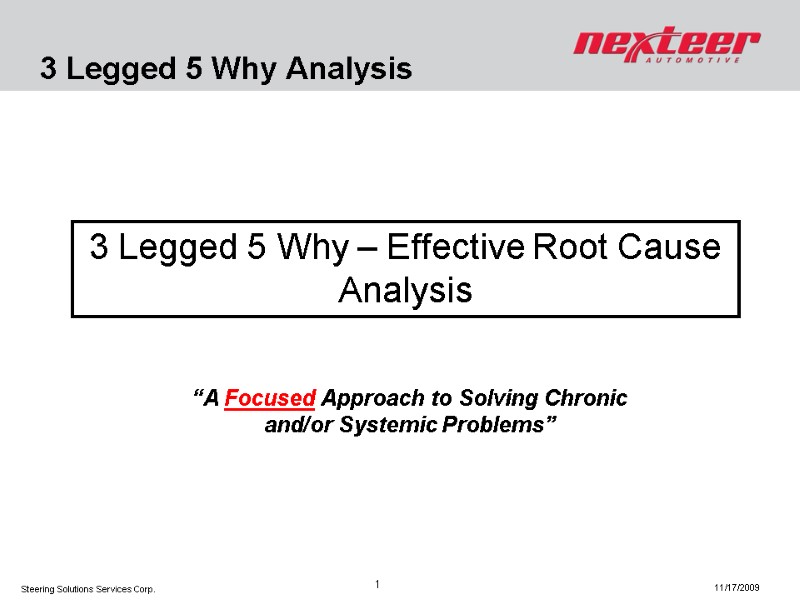
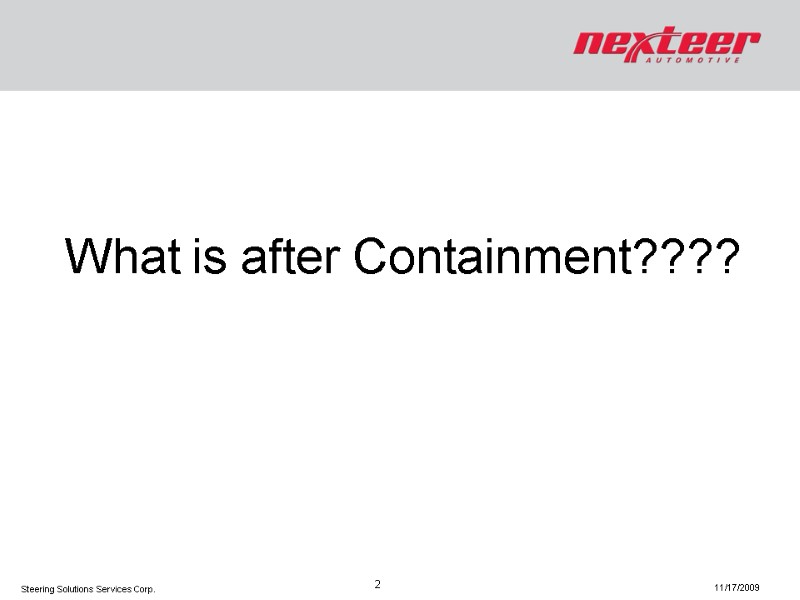
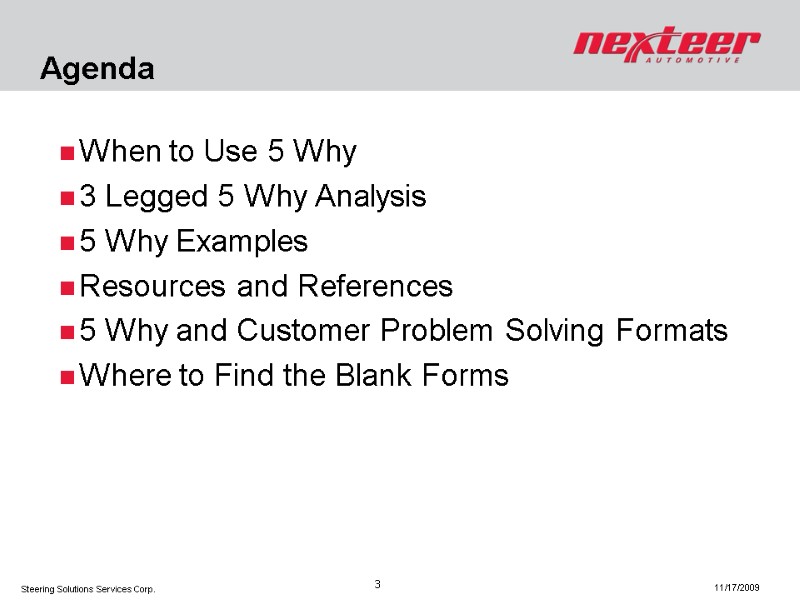
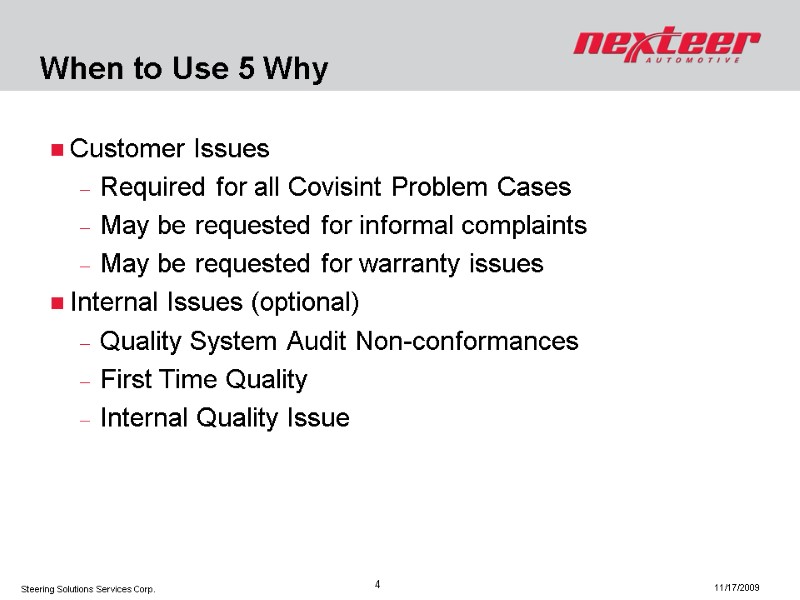
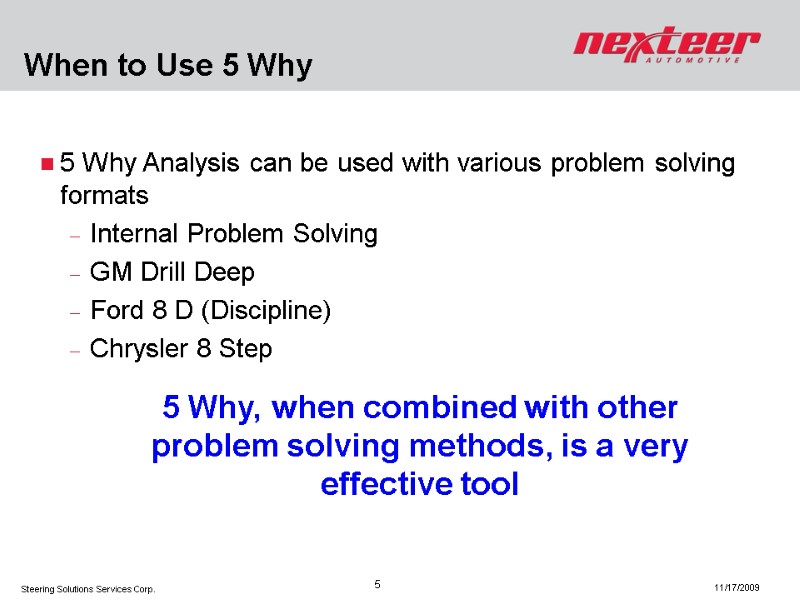
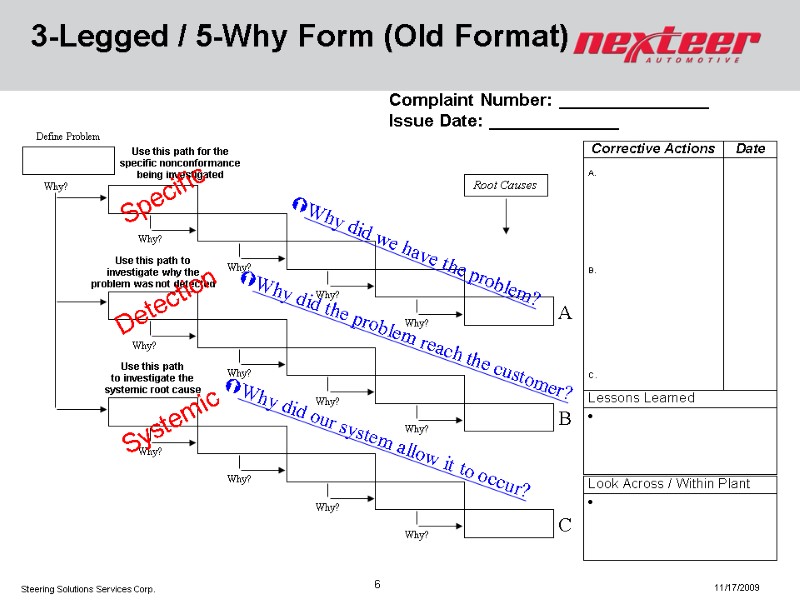
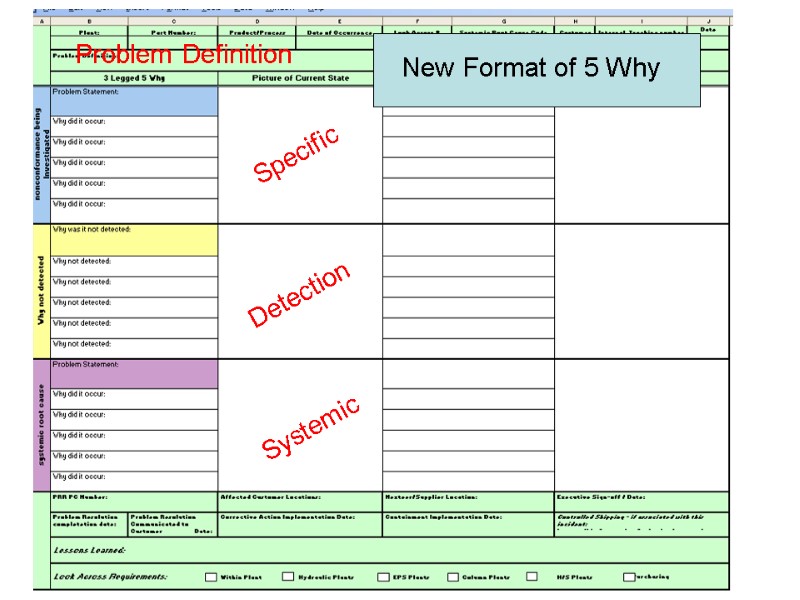
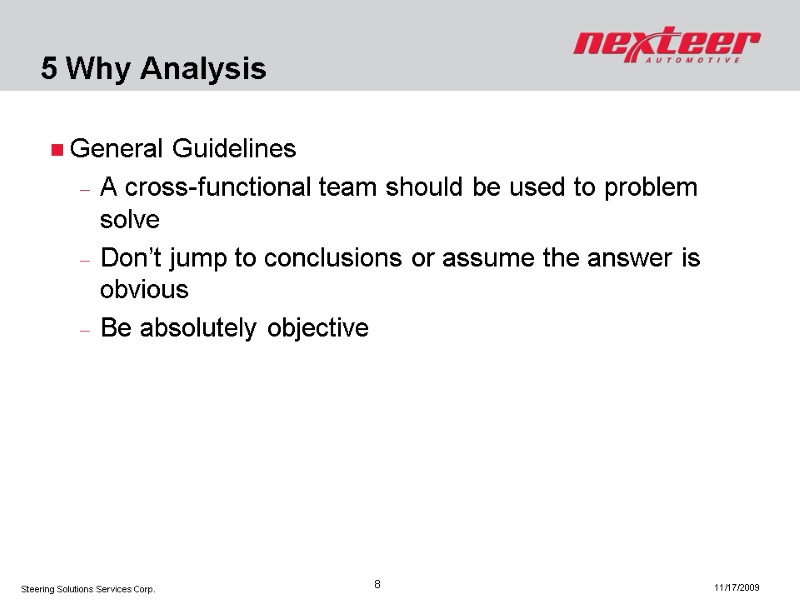
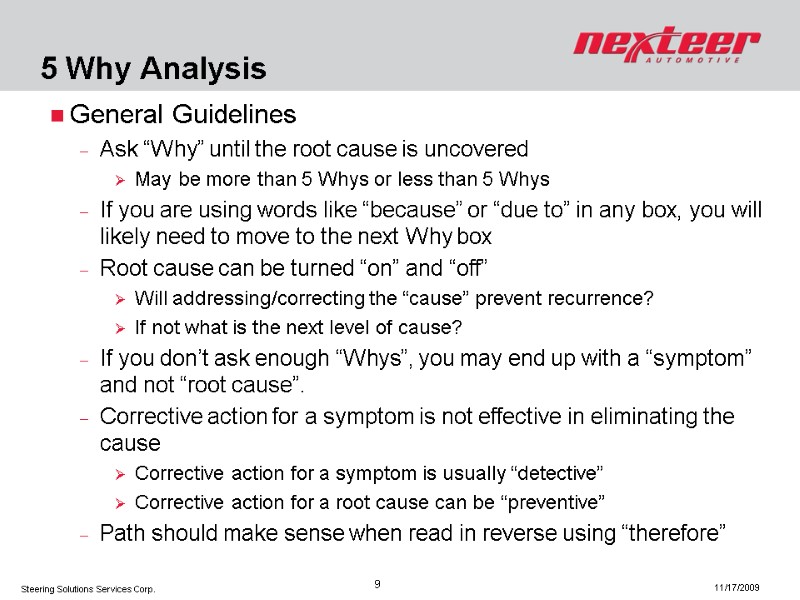
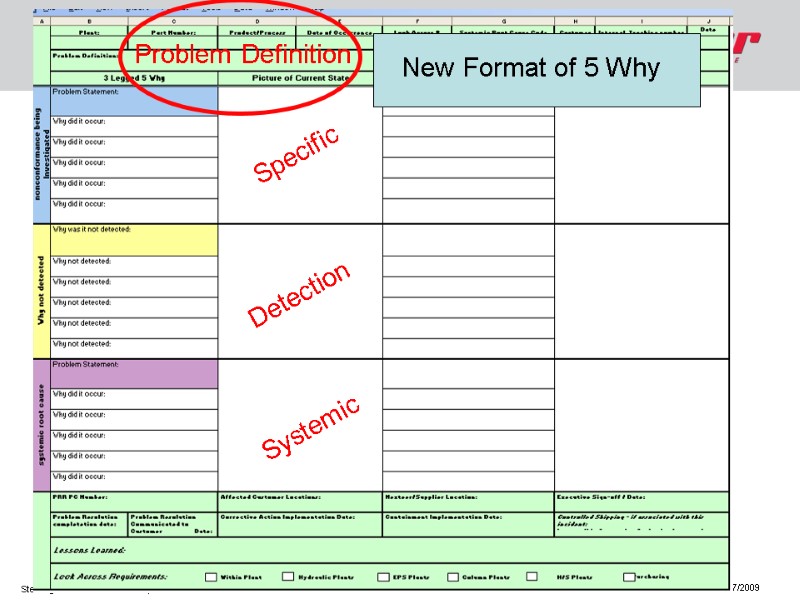
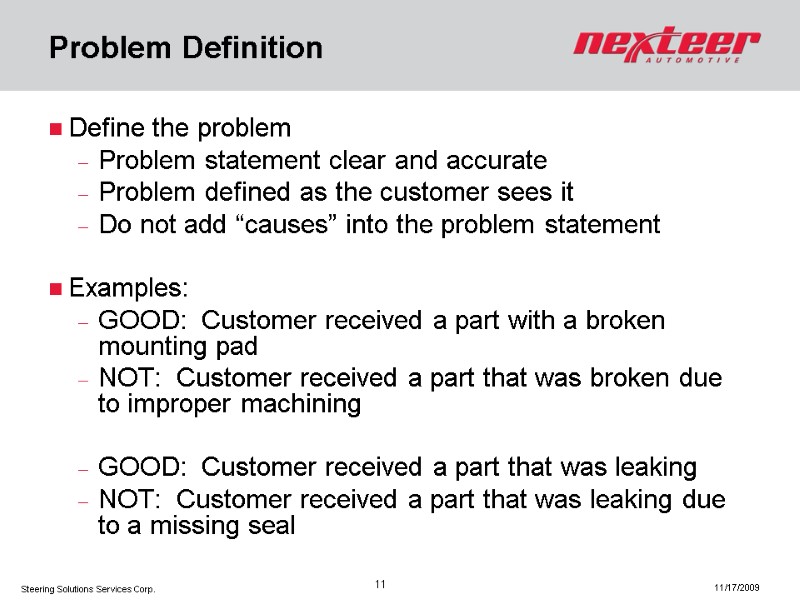
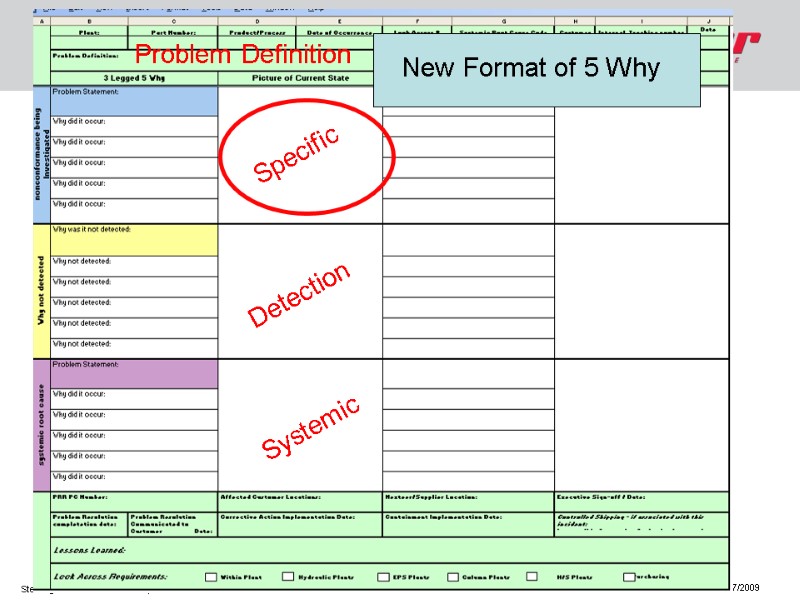
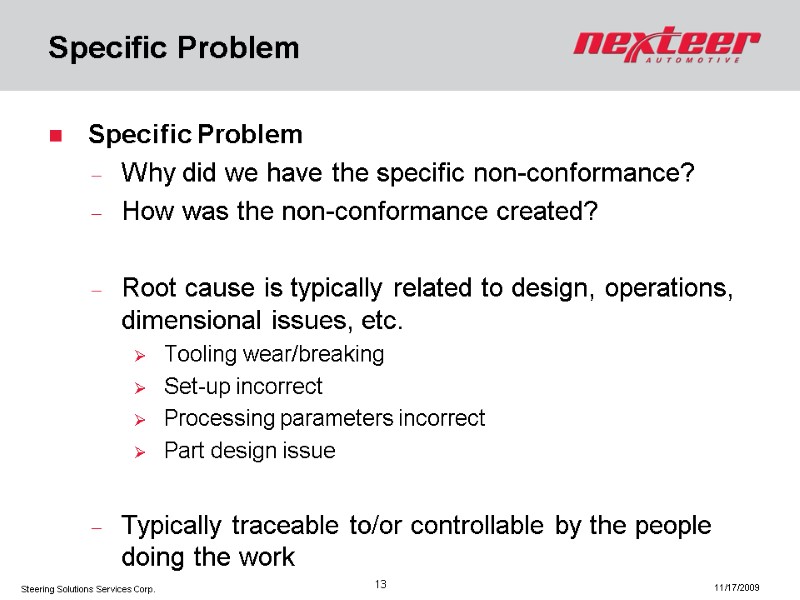
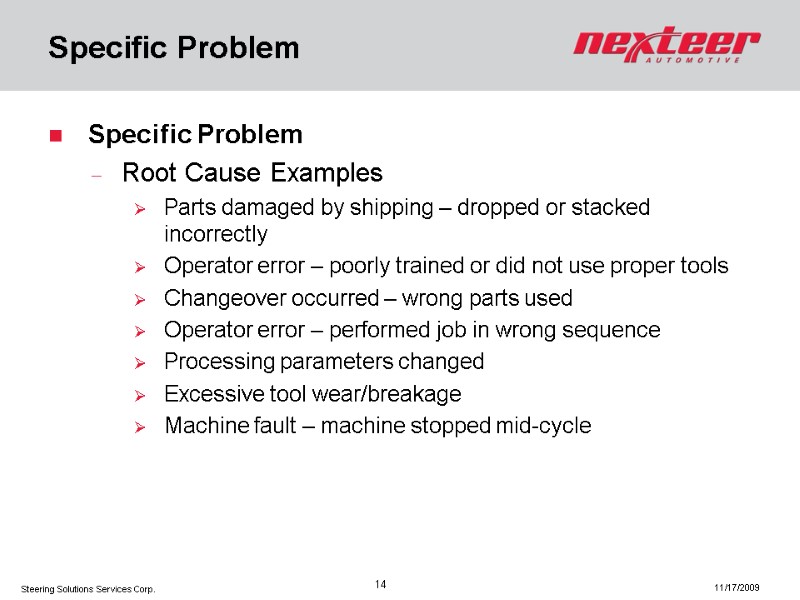

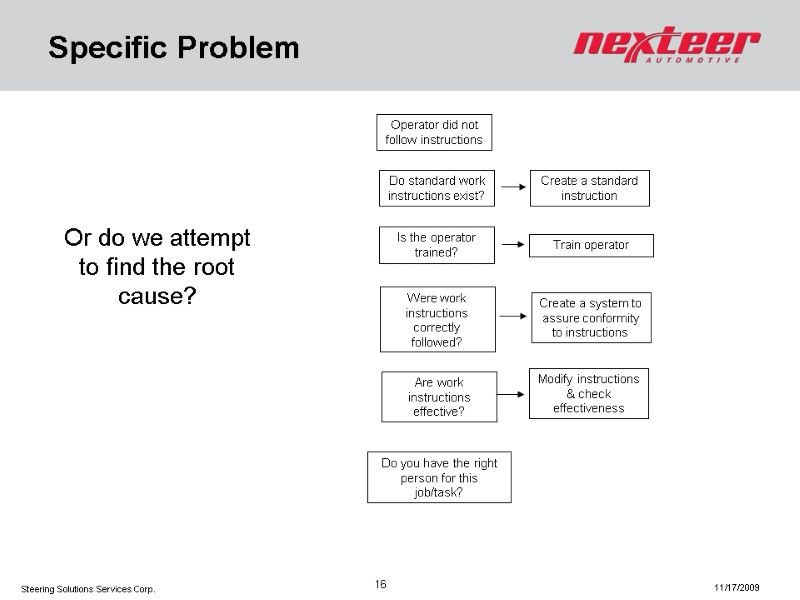
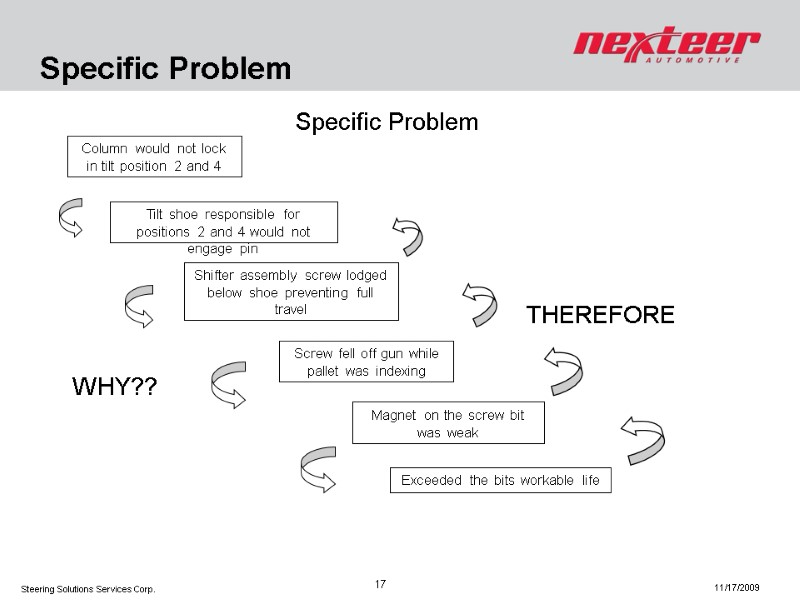
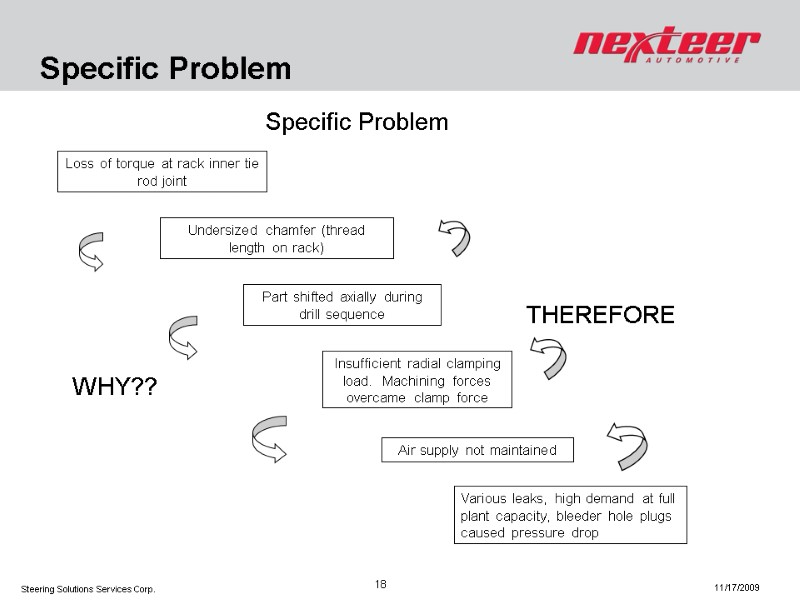
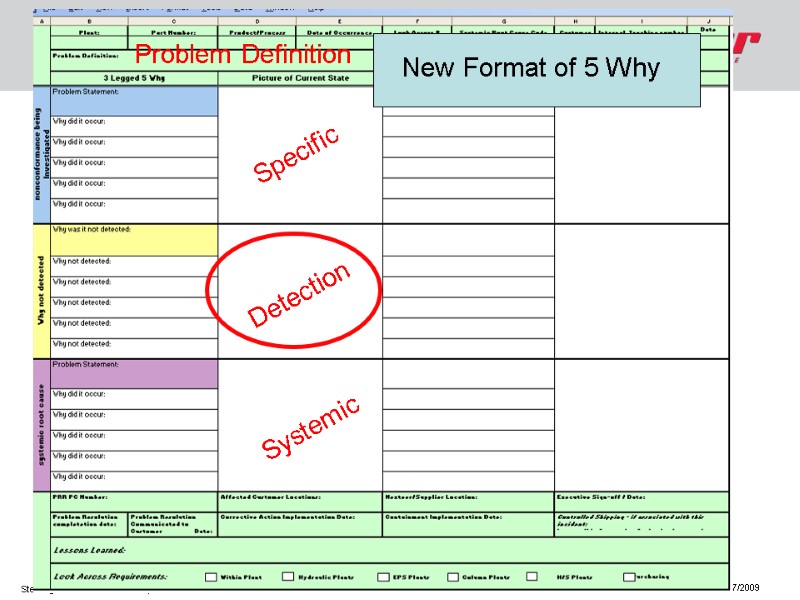
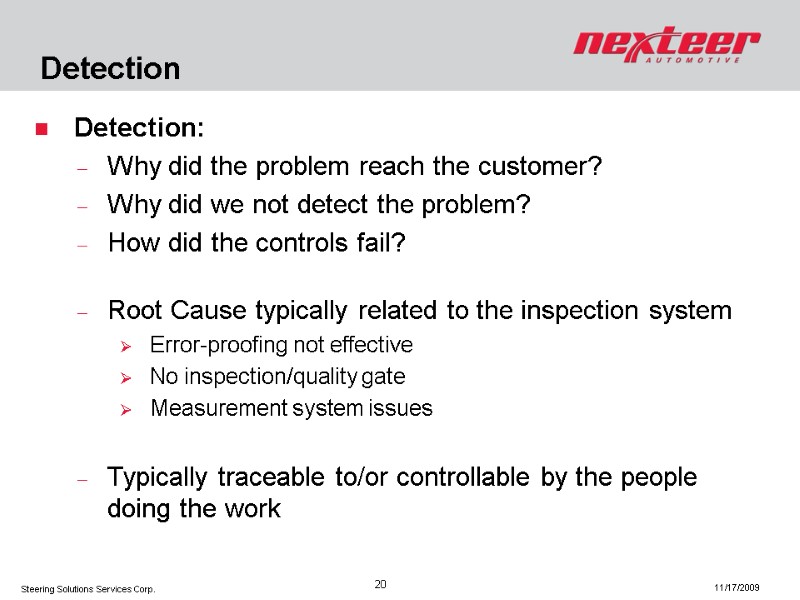
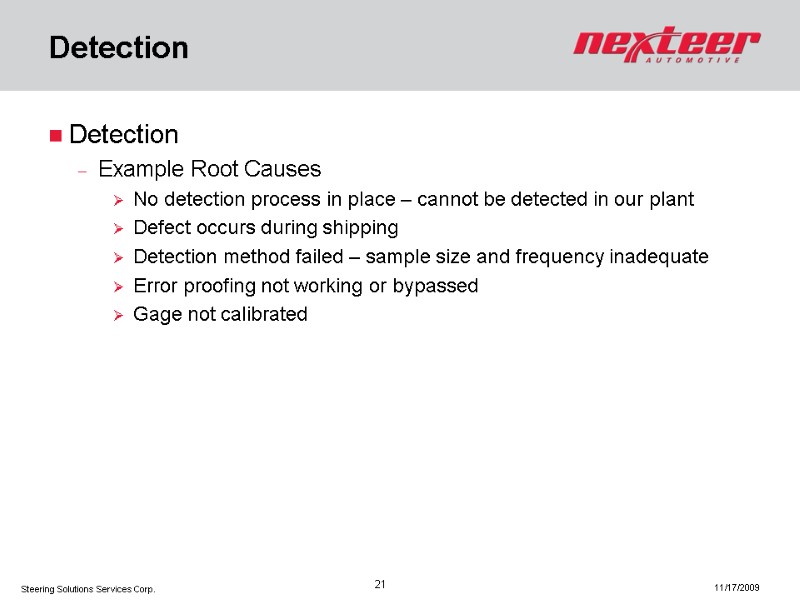
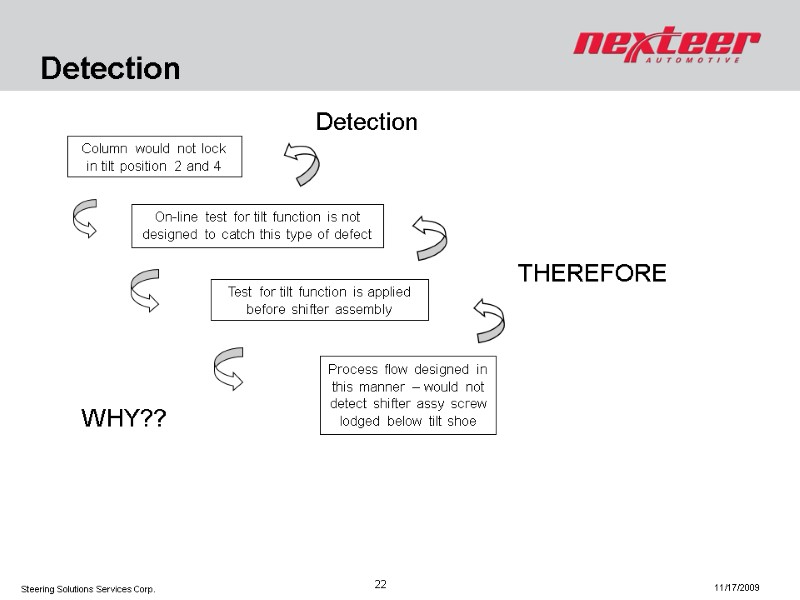
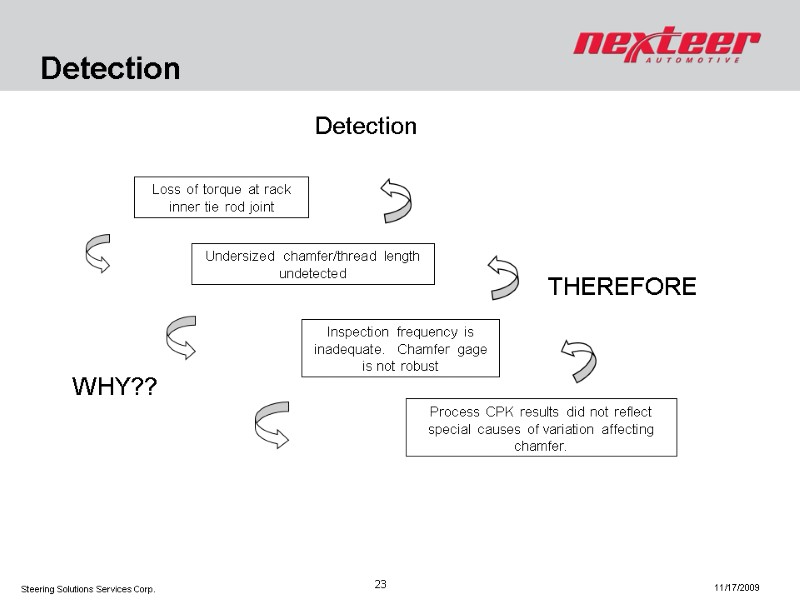

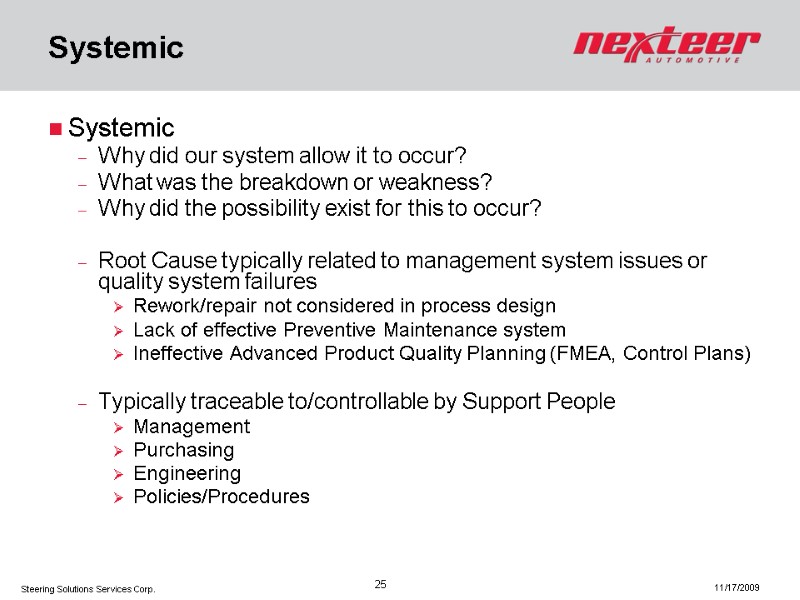
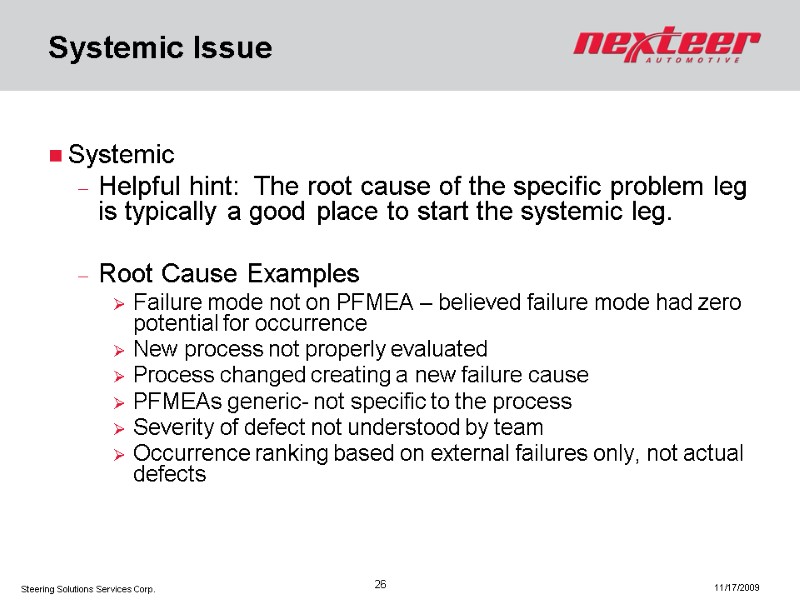
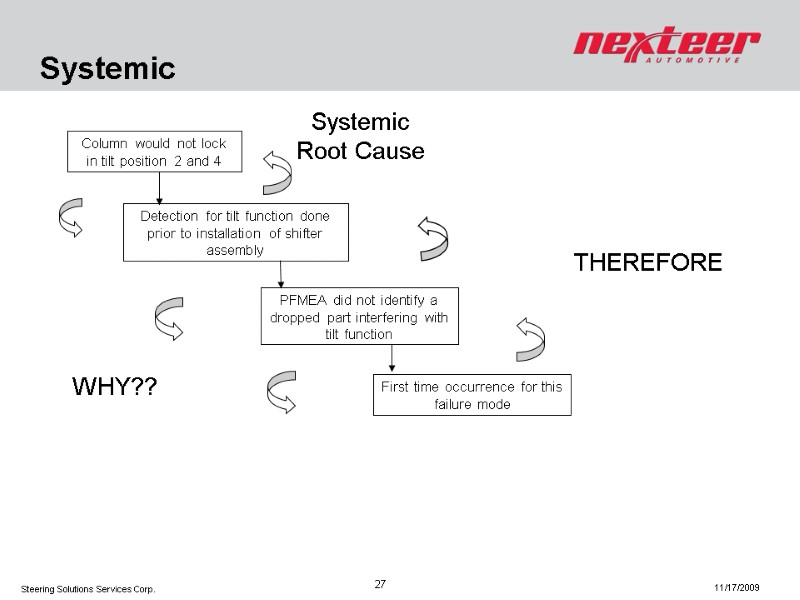
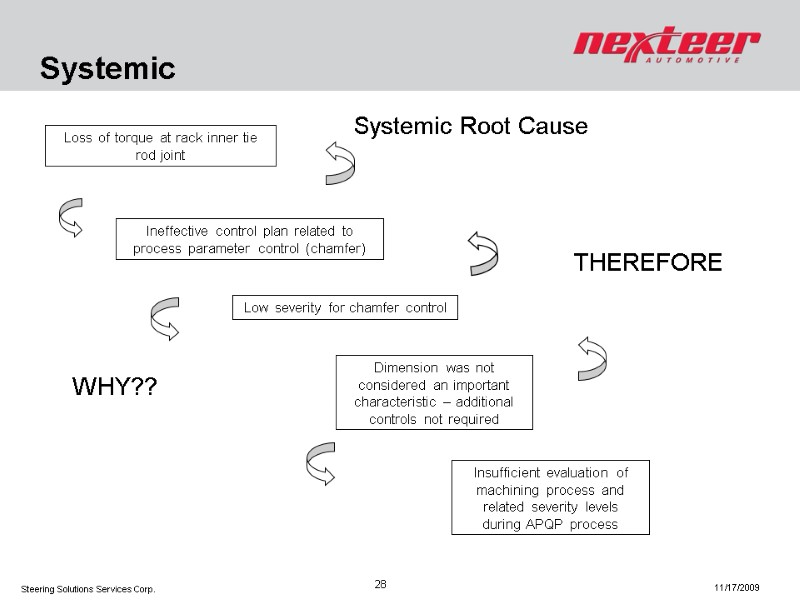
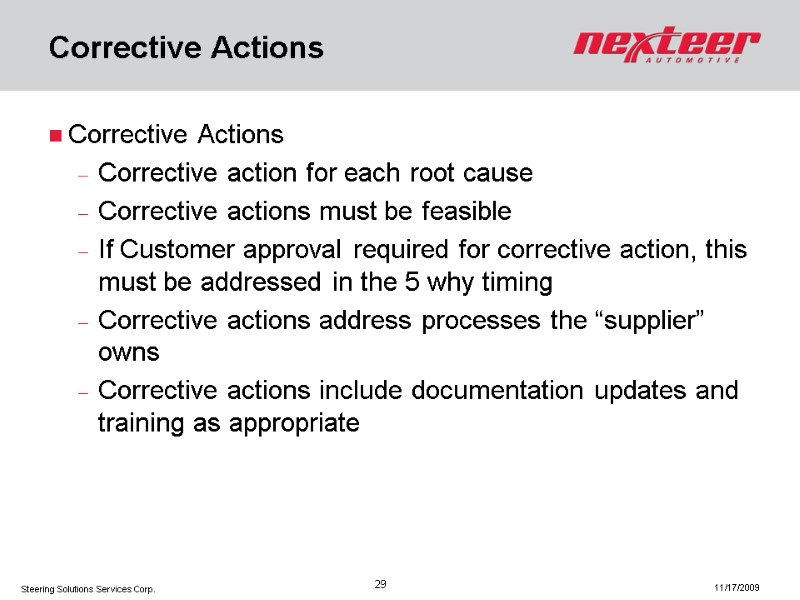
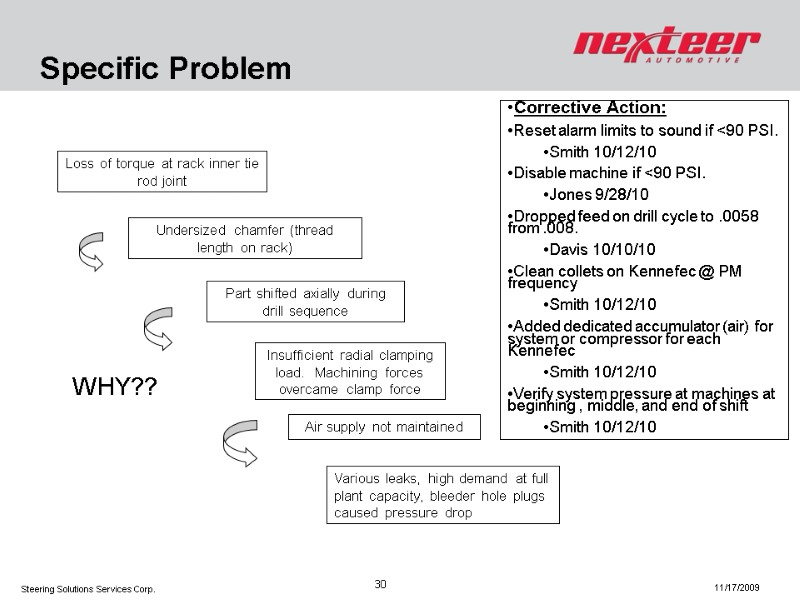
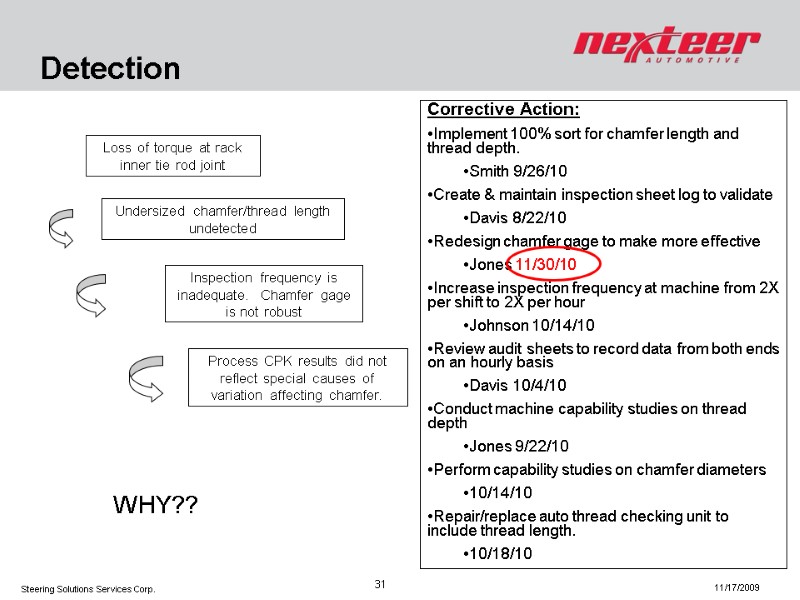
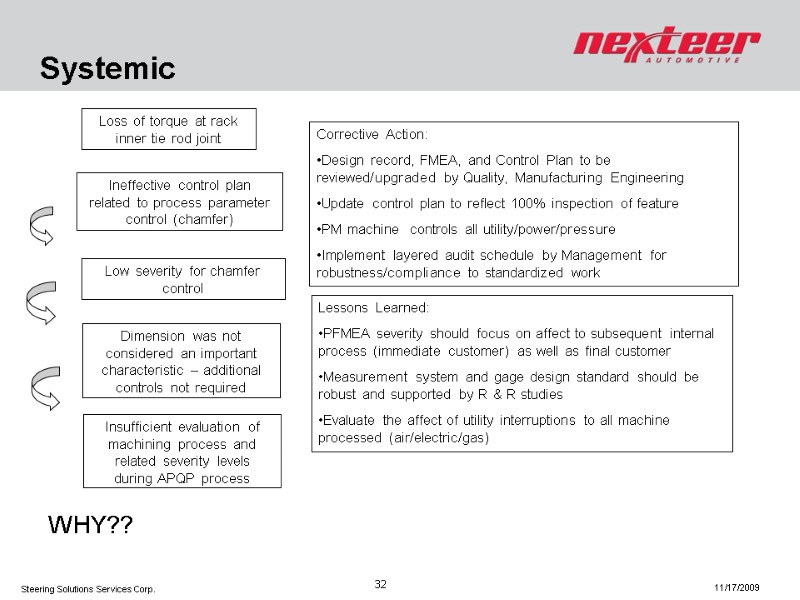
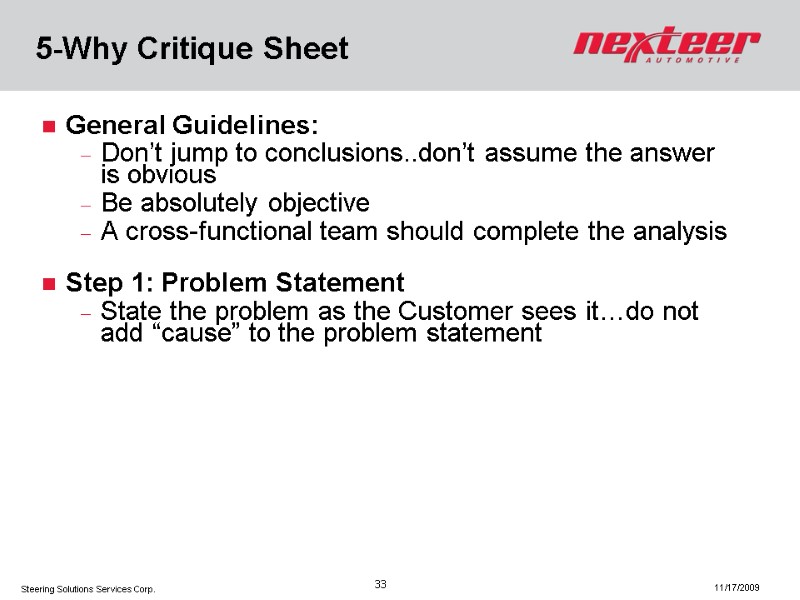
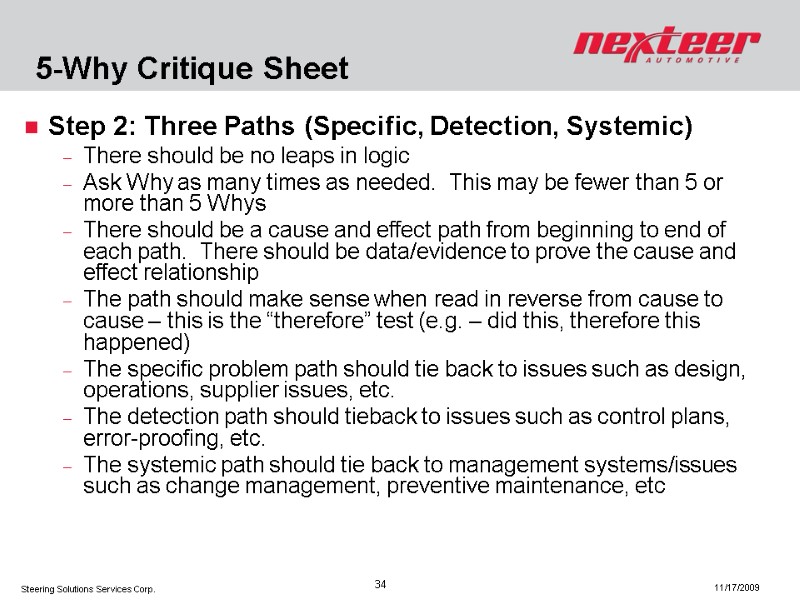
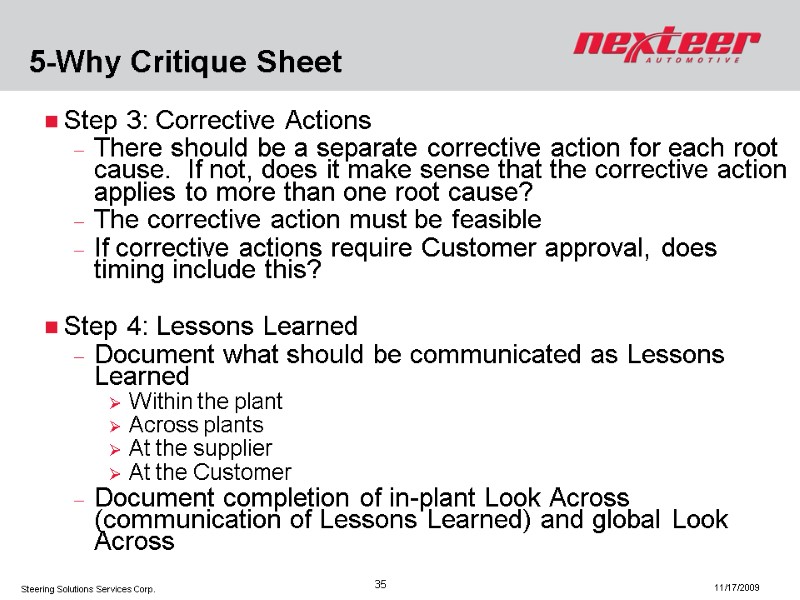
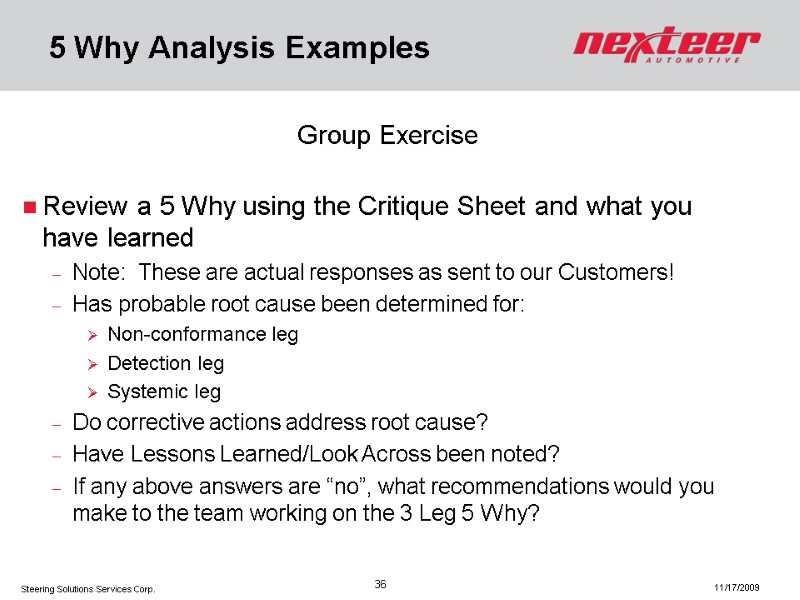
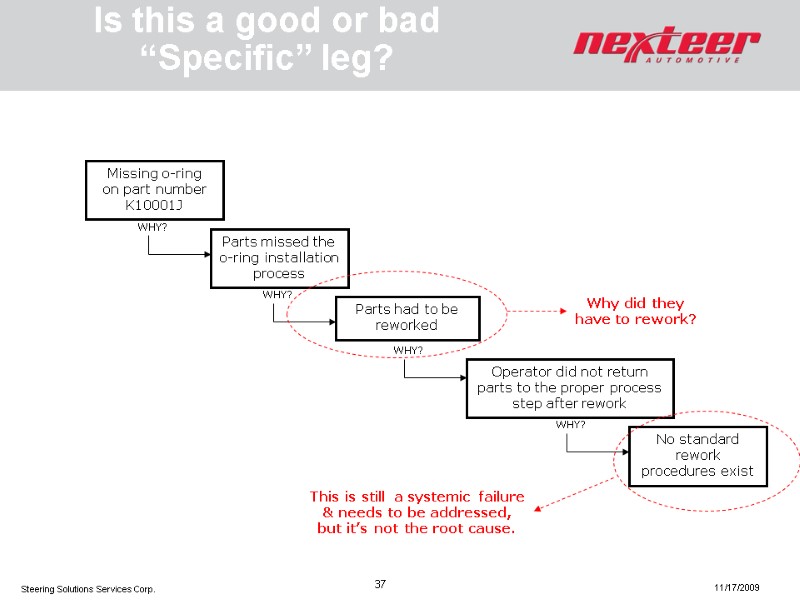
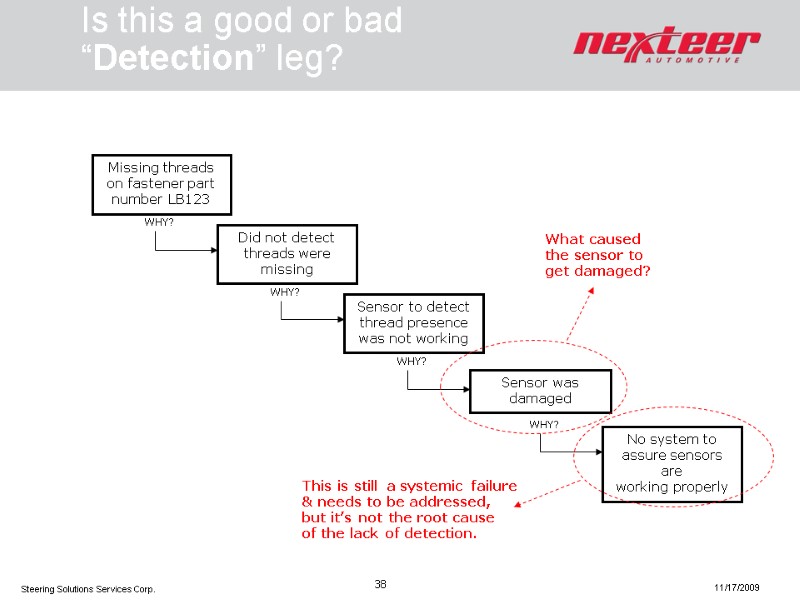
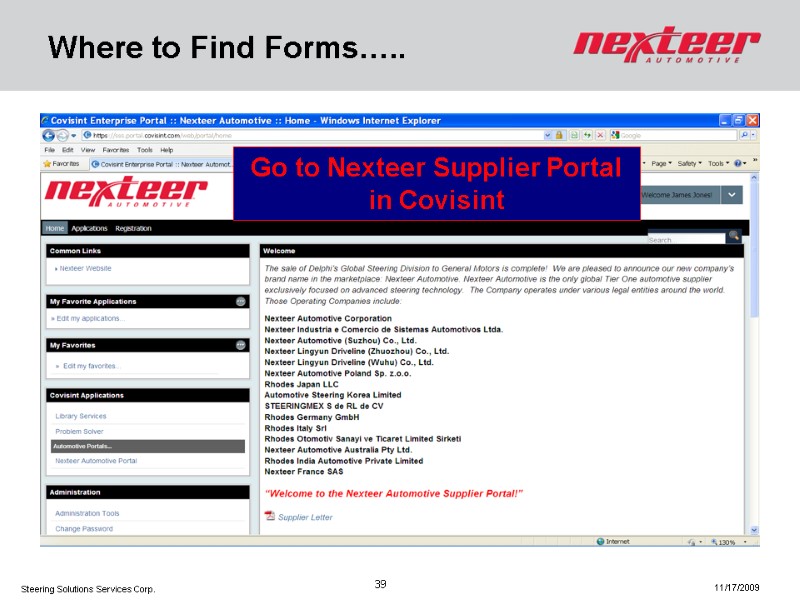
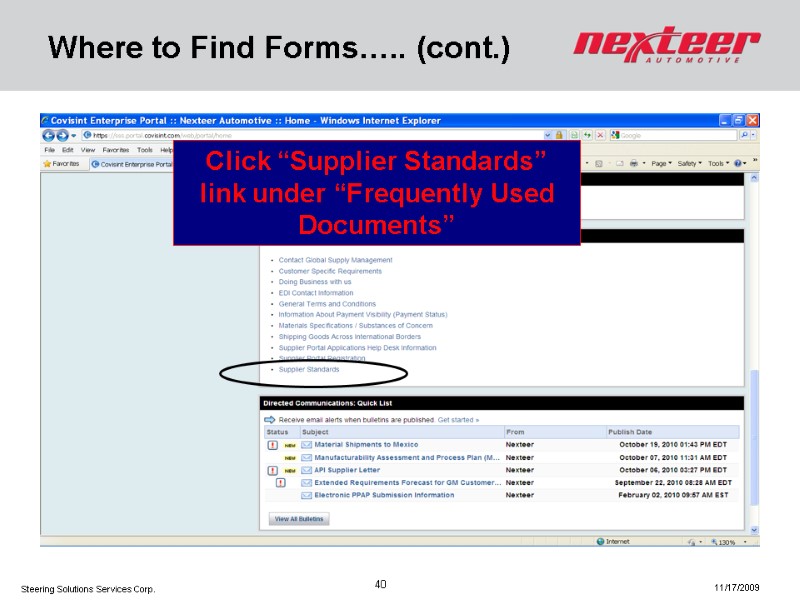
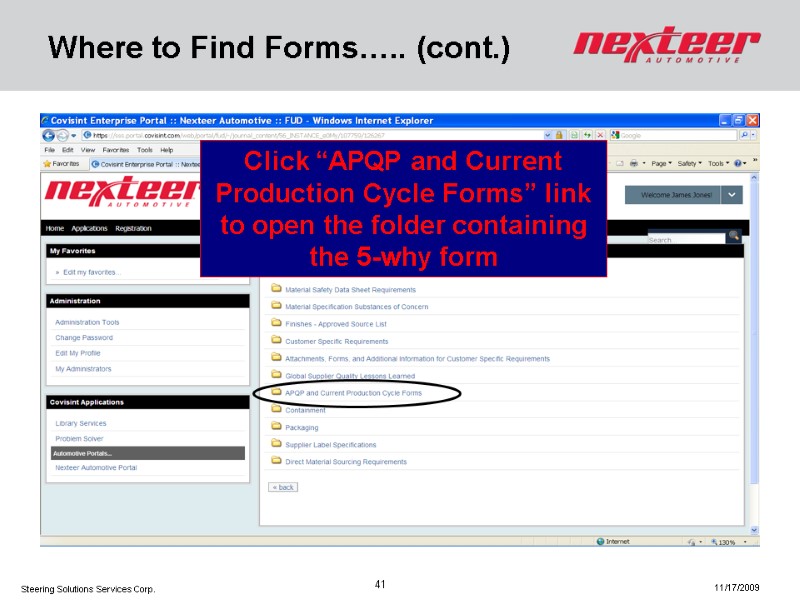
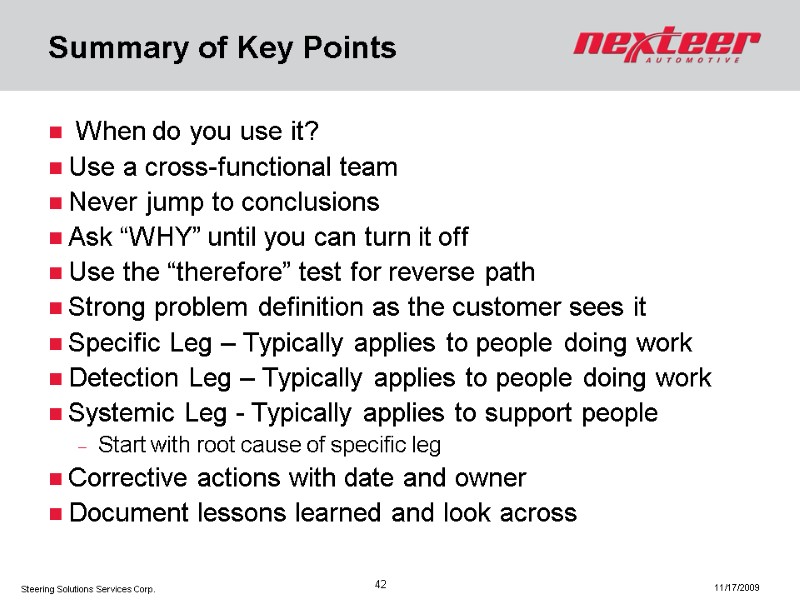
14656-5_why_training_21oct2010.ppt
- Количество слайдов: 42
 3 Legged 5 Why Analysis 3 Legged 5 Why – Effective Root Cause Analysis “A Focused Approach to Solving Chronic and/or Systemic Problems”
3 Legged 5 Why Analysis 3 Legged 5 Why – Effective Root Cause Analysis “A Focused Approach to Solving Chronic and/or Systemic Problems”
 What is after Containment????
What is after Containment????
 When to Use 5 Why 3 Legged 5 Why Analysis 5 Why Examples Resources and References 5 Why and Customer Problem Solving Formats Where to Find the Blank Forms Agenda
When to Use 5 Why 3 Legged 5 Why Analysis 5 Why Examples Resources and References 5 Why and Customer Problem Solving Formats Where to Find the Blank Forms Agenda
 When to Use 5 Why Customer Issues Required for all Covisint Problem Cases May be requested for informal complaints May be requested for warranty issues Internal Issues (optional) Quality System Audit Non-conformances First Time Quality Internal Quality Issue
When to Use 5 Why Customer Issues Required for all Covisint Problem Cases May be requested for informal complaints May be requested for warranty issues Internal Issues (optional) Quality System Audit Non-conformances First Time Quality Internal Quality Issue
 5 Why Analysis can be used with various problem solving formats Internal Problem Solving GM Drill Deep Ford 8 D (Discipline) Chrysler 8 Step When to Use 5 Why 5 Why, when combined with other problem solving methods, is a very effective tool
5 Why Analysis can be used with various problem solving formats Internal Problem Solving GM Drill Deep Ford 8 D (Discipline) Chrysler 8 Step When to Use 5 Why 5 Why, when combined with other problem solving methods, is a very effective tool
 3-Legged / 5-Why Form (Old Format) Why? Why? Why? Why? Why? Why? Why? Why? Why? Why? Why? Why? A C B Root Causes Define Problem Use this path for the specific nonconformance being investigated Use this path to investigate why the problem was not detected Use this path to investigate the systemic root cause Why? Complaint Number: _______________ Issue Date: _____________ Specific Detection Systemic Why did we have the problem? Why did the problem reach the customer? Why did our system allow it to occur?
3-Legged / 5-Why Form (Old Format) Why? Why? Why? Why? Why? Why? Why? Why? Why? Why? Why? Why? A C B Root Causes Define Problem Use this path for the specific nonconformance being investigated Use this path to investigate why the problem was not detected Use this path to investigate the systemic root cause Why? Complaint Number: _______________ Issue Date: _____________ Specific Detection Systemic Why did we have the problem? Why did the problem reach the customer? Why did our system allow it to occur?
 New Format of 5 Why Specific Detection Systemic Problem Definition
New Format of 5 Why Specific Detection Systemic Problem Definition
 5 Why Analysis General Guidelines A cross-functional team should be used to problem solve Don’t jump to conclusions or assume the answer is obvious Be absolutely objective
5 Why Analysis General Guidelines A cross-functional team should be used to problem solve Don’t jump to conclusions or assume the answer is obvious Be absolutely objective
 5 Why Analysis General Guidelines Ask “Why” until the root cause is uncovered May be more than 5 Whys or less than 5 Whys If you are using words like “because” or “due to” in any box, you will likely need to move to the next Why box Root cause can be turned “on” and “off” Will addressing/correcting the “cause” prevent recurrence? If not what is the next level of cause? If you don’t ask enough “Whys”, you may end up with a “symptom” and not “root cause”. Corrective action for a symptom is not effective in eliminating the cause Corrective action for a symptom is usually “detective” Corrective action for a root cause can be “preventive” Path should make sense when read in reverse using “therefore”
5 Why Analysis General Guidelines Ask “Why” until the root cause is uncovered May be more than 5 Whys or less than 5 Whys If you are using words like “because” or “due to” in any box, you will likely need to move to the next Why box Root cause can be turned “on” and “off” Will addressing/correcting the “cause” prevent recurrence? If not what is the next level of cause? If you don’t ask enough “Whys”, you may end up with a “symptom” and not “root cause”. Corrective action for a symptom is not effective in eliminating the cause Corrective action for a symptom is usually “detective” Corrective action for a root cause can be “preventive” Path should make sense when read in reverse using “therefore”
 New Format of 5 Why Specific Detection Systemic Problem Definition
New Format of 5 Why Specific Detection Systemic Problem Definition
 Problem Definition Define the problem Problem statement clear and accurate Problem defined as the customer sees it Do not add “causes” into the problem statement Examples: GOOD: Customer received a part with a broken mounting pad NOT: Customer received a part that was broken due to improper machining GOOD: Customer received a part that was leaking NOT: Customer received a part that was leaking due to a missing seal
Problem Definition Define the problem Problem statement clear and accurate Problem defined as the customer sees it Do not add “causes” into the problem statement Examples: GOOD: Customer received a part with a broken mounting pad NOT: Customer received a part that was broken due to improper machining GOOD: Customer received a part that was leaking NOT: Customer received a part that was leaking due to a missing seal
 New Format of 5 Why Specific Detection Systemic Problem Definition
New Format of 5 Why Specific Detection Systemic Problem Definition
 Specific Problem Specific Problem Why did we have the specific non-conformance? How was the non-conformance created? Root cause is typically related to design, operations, dimensional issues, etc. Tooling wear/breaking Set-up incorrect Processing parameters incorrect Part design issue Typically traceable to/or controllable by the people doing the work
Specific Problem Specific Problem Why did we have the specific non-conformance? How was the non-conformance created? Root cause is typically related to design, operations, dimensional issues, etc. Tooling wear/breaking Set-up incorrect Processing parameters incorrect Part design issue Typically traceable to/or controllable by the people doing the work
 Specific Problem Specific Problem Root Cause Examples Parts damaged by shipping – dropped or stacked incorrectly Operator error – poorly trained or did not use proper tools Changeover occurred – wrong parts used Operator error – performed job in wrong sequence Processing parameters changed Excessive tool wear/breakage Machine fault – machine stopped mid-cycle
Specific Problem Specific Problem Root Cause Examples Parts damaged by shipping – dropped or stacked incorrectly Operator error – poorly trained or did not use proper tools Changeover occurred – wrong parts used Operator error – performed job in wrong sequence Processing parameters changed Excessive tool wear/breakage Machine fault – machine stopped mid-cycle
 Specific Problem Operator did not follow instructions Do we stop here? What if root cause is?
Specific Problem Operator did not follow instructions Do we stop here? What if root cause is?
 Specific Problem Operator did not follow instructions Do standard work instructions exist? Is the operator trained? Were work instructions correctly followed? Are work instructions effective? Or do we attempt to find the root cause? Create a standard instruction Train operator Create a system to assure conformity to instructions Modify instructions & check effectiveness Do you have the right person for this job/task?
Specific Problem Operator did not follow instructions Do standard work instructions exist? Is the operator trained? Were work instructions correctly followed? Are work instructions effective? Or do we attempt to find the root cause? Create a standard instruction Train operator Create a system to assure conformity to instructions Modify instructions & check effectiveness Do you have the right person for this job/task?
 Specific Problem Column would not lock in tilt position 2 and 4 Tilt shoe responsible for positions 2 and 4 would not engage pin Shifter assembly screw lodged below shoe preventing full travel Screw fell off gun while pallet was indexing Magnet on the screw bit was weak Exceeded the bits workable life WHY?? THEREFORE Specific Problem
Specific Problem Column would not lock in tilt position 2 and 4 Tilt shoe responsible for positions 2 and 4 would not engage pin Shifter assembly screw lodged below shoe preventing full travel Screw fell off gun while pallet was indexing Magnet on the screw bit was weak Exceeded the bits workable life WHY?? THEREFORE Specific Problem
 Specific Problem Loss of torque at rack inner tie rod joint Undersized chamfer (thread length on rack) Part shifted axially during drill sequence Insufficient radial clamping load. Machining forces overcame clamp force Air supply not maintained WHY?? THEREFORE Specific Problem Various leaks, high demand at full plant capacity, bleeder hole plugs caused pressure drop
Specific Problem Loss of torque at rack inner tie rod joint Undersized chamfer (thread length on rack) Part shifted axially during drill sequence Insufficient radial clamping load. Machining forces overcame clamp force Air supply not maintained WHY?? THEREFORE Specific Problem Various leaks, high demand at full plant capacity, bleeder hole plugs caused pressure drop
 New Format of 5 Why Specific Detection Systemic Problem Definition
New Format of 5 Why Specific Detection Systemic Problem Definition
 Detection Detection: Why did the problem reach the customer? Why did we not detect the problem? How did the controls fail? Root Cause typically related to the inspection system Error-proofing not effective No inspection/quality gate Measurement system issues Typically traceable to/or controllable by the people doing the work
Detection Detection: Why did the problem reach the customer? Why did we not detect the problem? How did the controls fail? Root Cause typically related to the inspection system Error-proofing not effective No inspection/quality gate Measurement system issues Typically traceable to/or controllable by the people doing the work
 Detection Detection Example Root Causes No detection process in place – cannot be detected in our plant Defect occurs during shipping Detection method failed – sample size and frequency inadequate Error proofing not working or bypassed Gage not calibrated
Detection Detection Example Root Causes No detection process in place – cannot be detected in our plant Defect occurs during shipping Detection method failed – sample size and frequency inadequate Error proofing not working or bypassed Gage not calibrated
 Detection Column would not lock in tilt position 2 and 4 On-line test for tilt function is not designed to catch this type of defect Test for tilt function is applied before shifter assembly Process flow designed in this manner – would not detect shifter assy screw lodged below tilt shoe WHY?? THEREFORE Detection
Detection Column would not lock in tilt position 2 and 4 On-line test for tilt function is not designed to catch this type of defect Test for tilt function is applied before shifter assembly Process flow designed in this manner – would not detect shifter assy screw lodged below tilt shoe WHY?? THEREFORE Detection
 Detection Undersized chamfer/thread length undetected Inspection frequency is inadequate. Chamfer gage is not robust Process CPK results did not reflect special causes of variation affecting chamfer. WHY?? THEREFORE Detection Loss of torque at rack inner tie rod joint
Detection Undersized chamfer/thread length undetected Inspection frequency is inadequate. Chamfer gage is not robust Process CPK results did not reflect special causes of variation affecting chamfer. WHY?? THEREFORE Detection Loss of torque at rack inner tie rod joint
 New Format of 5 Why Specific Detection Systemic Problem Definition
New Format of 5 Why Specific Detection Systemic Problem Definition
 Systemic Systemic Why did our system allow it to occur? What was the breakdown or weakness? Why did the possibility exist for this to occur? Root Cause typically related to management system issues or quality system failures Rework/repair not considered in process design Lack of effective Preventive Maintenance system Ineffective Advanced Product Quality Planning (FMEA, Control Plans) Typically traceable to/controllable by Support People Management Purchasing Engineering Policies/Procedures
Systemic Systemic Why did our system allow it to occur? What was the breakdown or weakness? Why did the possibility exist for this to occur? Root Cause typically related to management system issues or quality system failures Rework/repair not considered in process design Lack of effective Preventive Maintenance system Ineffective Advanced Product Quality Planning (FMEA, Control Plans) Typically traceable to/controllable by Support People Management Purchasing Engineering Policies/Procedures
 Systemic Issue Systemic Helpful hint: The root cause of the specific problem leg is typically a good place to start the systemic leg. Root Cause Examples Failure mode not on PFMEA – believed failure mode had zero potential for occurrence New process not properly evaluated Process changed creating a new failure cause PFMEAs generic- not specific to the process Severity of defect not understood by team Occurrence ranking based on external failures only, not actual defects
Systemic Issue Systemic Helpful hint: The root cause of the specific problem leg is typically a good place to start the systemic leg. Root Cause Examples Failure mode not on PFMEA – believed failure mode had zero potential for occurrence New process not properly evaluated Process changed creating a new failure cause PFMEAs generic- not specific to the process Severity of defect not understood by team Occurrence ranking based on external failures only, not actual defects
 Systemic Column would not lock in tilt position 2 and 4 Detection for tilt function done prior to installation of shifter assembly PFMEA did not identify a dropped part interfering with tilt function WHY?? THEREFORE Systemic Root Cause First time occurrence for this failure mode
Systemic Column would not lock in tilt position 2 and 4 Detection for tilt function done prior to installation of shifter assembly PFMEA did not identify a dropped part interfering with tilt function WHY?? THEREFORE Systemic Root Cause First time occurrence for this failure mode
 Systemic Ineffective control plan related to process parameter control (chamfer) Low severity for chamfer control WHY?? THEREFORE Systemic Root Cause Insufficient evaluation of machining process and related severity levels during APQP process Dimension was not considered an important characteristic – additional controls not required Loss of torque at rack inner tie rod joint
Systemic Ineffective control plan related to process parameter control (chamfer) Low severity for chamfer control WHY?? THEREFORE Systemic Root Cause Insufficient evaluation of machining process and related severity levels during APQP process Dimension was not considered an important characteristic – additional controls not required Loss of torque at rack inner tie rod joint
 Corrective Actions Corrective Actions Corrective action for each root cause Corrective actions must be feasible If Customer approval required for corrective action, this must be addressed in the 5 why timing Corrective actions address processes the “supplier” owns Corrective actions include documentation updates and training as appropriate
Corrective Actions Corrective Actions Corrective action for each root cause Corrective actions must be feasible If Customer approval required for corrective action, this must be addressed in the 5 why timing Corrective actions address processes the “supplier” owns Corrective actions include documentation updates and training as appropriate
 Specific Problem Loss of torque at rack inner tie rod joint Undersized chamfer (thread length on rack) Part shifted axially during drill sequence Insufficient radial clamping load. Machining forces overcame clamp force Air supply not maintained WHY?? Various leaks, high demand at full plant capacity, bleeder hole plugs caused pressure drop Corrective Action: Reset alarm limits to sound if <90 PSI. Smith 10/12/10 Disable machine if <90 PSI. Jones 9/28/10 Dropped feed on drill cycle to .0058 from .008. Davis 10/10/10 Clean collets on Kennefec @ PM frequency Smith 10/12/10 Added dedicated accumulator (air) for system or compressor for each Kennefec Smith 10/12/10 Verify system pressure at machines at beginning , middle, and end of shift Smith 10/12/10
Specific Problem Loss of torque at rack inner tie rod joint Undersized chamfer (thread length on rack) Part shifted axially during drill sequence Insufficient radial clamping load. Machining forces overcame clamp force Air supply not maintained WHY?? Various leaks, high demand at full plant capacity, bleeder hole plugs caused pressure drop Corrective Action: Reset alarm limits to sound if <90 PSI. Smith 10/12/10 Disable machine if <90 PSI. Jones 9/28/10 Dropped feed on drill cycle to .0058 from .008. Davis 10/10/10 Clean collets on Kennefec @ PM frequency Smith 10/12/10 Added dedicated accumulator (air) for system or compressor for each Kennefec Smith 10/12/10 Verify system pressure at machines at beginning , middle, and end of shift Smith 10/12/10
 Detection Undersized chamfer/thread length undetected Inspection frequency is inadequate. Chamfer gage is not robust Process CPK results did not reflect special causes of variation affecting chamfer. WHY?? Loss of torque at rack inner tie rod joint Corrective Action: Implement 100% sort for chamfer length and thread depth. Smith 9/26/10 Create & maintain inspection sheet log to validate Davis 8/22/10 Redesign chamfer gage to make more effective Jones 11/30/10 Increase inspection frequency at machine from 2X per shift to 2X per hour Johnson 10/14/10 Review audit sheets to record data from both ends on an hourly basis Davis 10/4/10 Conduct machine capability studies on thread depth Jones 9/22/10 Perform capability studies on chamfer diameters 10/14/10 Repair/replace auto thread checking unit to include thread length. 10/18/10
Detection Undersized chamfer/thread length undetected Inspection frequency is inadequate. Chamfer gage is not robust Process CPK results did not reflect special causes of variation affecting chamfer. WHY?? Loss of torque at rack inner tie rod joint Corrective Action: Implement 100% sort for chamfer length and thread depth. Smith 9/26/10 Create & maintain inspection sheet log to validate Davis 8/22/10 Redesign chamfer gage to make more effective Jones 11/30/10 Increase inspection frequency at machine from 2X per shift to 2X per hour Johnson 10/14/10 Review audit sheets to record data from both ends on an hourly basis Davis 10/4/10 Conduct machine capability studies on thread depth Jones 9/22/10 Perform capability studies on chamfer diameters 10/14/10 Repair/replace auto thread checking unit to include thread length. 10/18/10
 Systemic Low severity for chamfer control WHY?? Corrective Action: Design record, FMEA, and Control Plan to be reviewed/upgraded by Quality, Manufacturing Engineering Update control plan to reflect 100% inspection of feature PM machine controls all utility/power/pressure Implement layered audit schedule by Management for robustness/compliance to standardized work Loss of torque at rack inner tie rod joint Lessons Learned: PFMEA severity should focus on affect to subsequent internal process (immediate customer) as well as final customer Measurement system and gage design standard should be robust and supported by R & R studies Evaluate the affect of utility interruptions to all machine processed (air/electric/gas) Ineffective control plan related to process parameter control (chamfer) Dimension was not considered an important characteristic – additional controls not required Insufficient evaluation of machining process and related severity levels during APQP process
Systemic Low severity for chamfer control WHY?? Corrective Action: Design record, FMEA, and Control Plan to be reviewed/upgraded by Quality, Manufacturing Engineering Update control plan to reflect 100% inspection of feature PM machine controls all utility/power/pressure Implement layered audit schedule by Management for robustness/compliance to standardized work Loss of torque at rack inner tie rod joint Lessons Learned: PFMEA severity should focus on affect to subsequent internal process (immediate customer) as well as final customer Measurement system and gage design standard should be robust and supported by R & R studies Evaluate the affect of utility interruptions to all machine processed (air/electric/gas) Ineffective control plan related to process parameter control (chamfer) Dimension was not considered an important characteristic – additional controls not required Insufficient evaluation of machining process and related severity levels during APQP process
 5-Why Critique Sheet General Guidelines: Don’t jump to conclusions..don’t assume the answer is obvious Be absolutely objective A cross-functional team should complete the analysis Step 1: Problem Statement State the problem as the Customer sees it…do not add “cause” to the problem statement
5-Why Critique Sheet General Guidelines: Don’t jump to conclusions..don’t assume the answer is obvious Be absolutely objective A cross-functional team should complete the analysis Step 1: Problem Statement State the problem as the Customer sees it…do not add “cause” to the problem statement
 5-Why Critique Sheet Step 2: Three Paths (Specific, Detection, Systemic) There should be no leaps in logic Ask Why as many times as needed. This may be fewer than 5 or more than 5 Whys There should be a cause and effect path from beginning to end of each path. There should be data/evidence to prove the cause and effect relationship The path should make sense when read in reverse from cause to cause – this is the “therefore” test (e.g. – did this, therefore this happened) The specific problem path should tie back to issues such as design, operations, supplier issues, etc. The detection path should tieback to issues such as control plans, error-proofing, etc. The systemic path should tie back to management systems/issues such as change management, preventive maintenance, etc
5-Why Critique Sheet Step 2: Three Paths (Specific, Detection, Systemic) There should be no leaps in logic Ask Why as many times as needed. This may be fewer than 5 or more than 5 Whys There should be a cause and effect path from beginning to end of each path. There should be data/evidence to prove the cause and effect relationship The path should make sense when read in reverse from cause to cause – this is the “therefore” test (e.g. – did this, therefore this happened) The specific problem path should tie back to issues such as design, operations, supplier issues, etc. The detection path should tieback to issues such as control plans, error-proofing, etc. The systemic path should tie back to management systems/issues such as change management, preventive maintenance, etc
 5-Why Critique Sheet Step 3: Corrective Actions There should be a separate corrective action for each root cause. If not, does it make sense that the corrective action applies to more than one root cause? The corrective action must be feasible If corrective actions require Customer approval, does timing include this? Step 4: Lessons Learned Document what should be communicated as Lessons Learned Within the plant Across plants At the supplier At the Customer Document completion of in-plant Look Across (communication of Lessons Learned) and global Look Across
5-Why Critique Sheet Step 3: Corrective Actions There should be a separate corrective action for each root cause. If not, does it make sense that the corrective action applies to more than one root cause? The corrective action must be feasible If corrective actions require Customer approval, does timing include this? Step 4: Lessons Learned Document what should be communicated as Lessons Learned Within the plant Across plants At the supplier At the Customer Document completion of in-plant Look Across (communication of Lessons Learned) and global Look Across
 5 Why Analysis Examples Group Exercise Review a 5 Why using the Critique Sheet and what you have learned Note: These are actual responses as sent to our Customers! Has probable root cause been determined for: Non-conformance leg Detection leg Systemic leg Do corrective actions address root cause? Have Lessons Learned/Look Across been noted? If any above answers are “no”, what recommendations would you make to the team working on the 3 Leg 5 Why?
5 Why Analysis Examples Group Exercise Review a 5 Why using the Critique Sheet and what you have learned Note: These are actual responses as sent to our Customers! Has probable root cause been determined for: Non-conformance leg Detection leg Systemic leg Do corrective actions address root cause? Have Lessons Learned/Look Across been noted? If any above answers are “no”, what recommendations would you make to the team working on the 3 Leg 5 Why?
 This is still a systemic failure & needs to be addressed, but it’s not the root cause. Is this a good or bad “Specific” leg?
This is still a systemic failure & needs to be addressed, but it’s not the root cause. Is this a good or bad “Specific” leg?
 What caused the sensor to get damaged? This is still a systemic failure & needs to be addressed, but it’s not the root cause of the lack of detection. Is this a good or bad “Detection” leg?
What caused the sensor to get damaged? This is still a systemic failure & needs to be addressed, but it’s not the root cause of the lack of detection. Is this a good or bad “Detection” leg?
 Where to Find Forms….. Go to Nexteer Supplier Portal in Covisint
Where to Find Forms….. Go to Nexteer Supplier Portal in Covisint
 Where to Find Forms….. (cont.) Click “Supplier Standards” link under “Frequently Used Documents”
Where to Find Forms….. (cont.) Click “Supplier Standards” link under “Frequently Used Documents”
 Where to Find Forms….. (cont.) Click “APQP and Current Production Cycle Forms” link to open the folder containing the 5-why form
Where to Find Forms….. (cont.) Click “APQP and Current Production Cycle Forms” link to open the folder containing the 5-why form
 Summary of Key Points When do you use it? Use a cross-functional team Never jump to conclusions Ask “WHY” until you can turn it off Use the “therefore” test for reverse path Strong problem definition as the customer sees it Specific Leg – Typically applies to people doing work Detection Leg – Typically applies to people doing work Systemic Leg - Typically applies to support people Start with root cause of specific leg Corrective actions with date and owner Document lessons learned and look across
Summary of Key Points When do you use it? Use a cross-functional team Never jump to conclusions Ask “WHY” until you can turn it off Use the “therefore” test for reverse path Strong problem definition as the customer sees it Specific Leg – Typically applies to people doing work Detection Leg – Typically applies to people doing work Systemic Leg - Typically applies to support people Start with root cause of specific leg Corrective actions with date and owner Document lessons learned and look across

